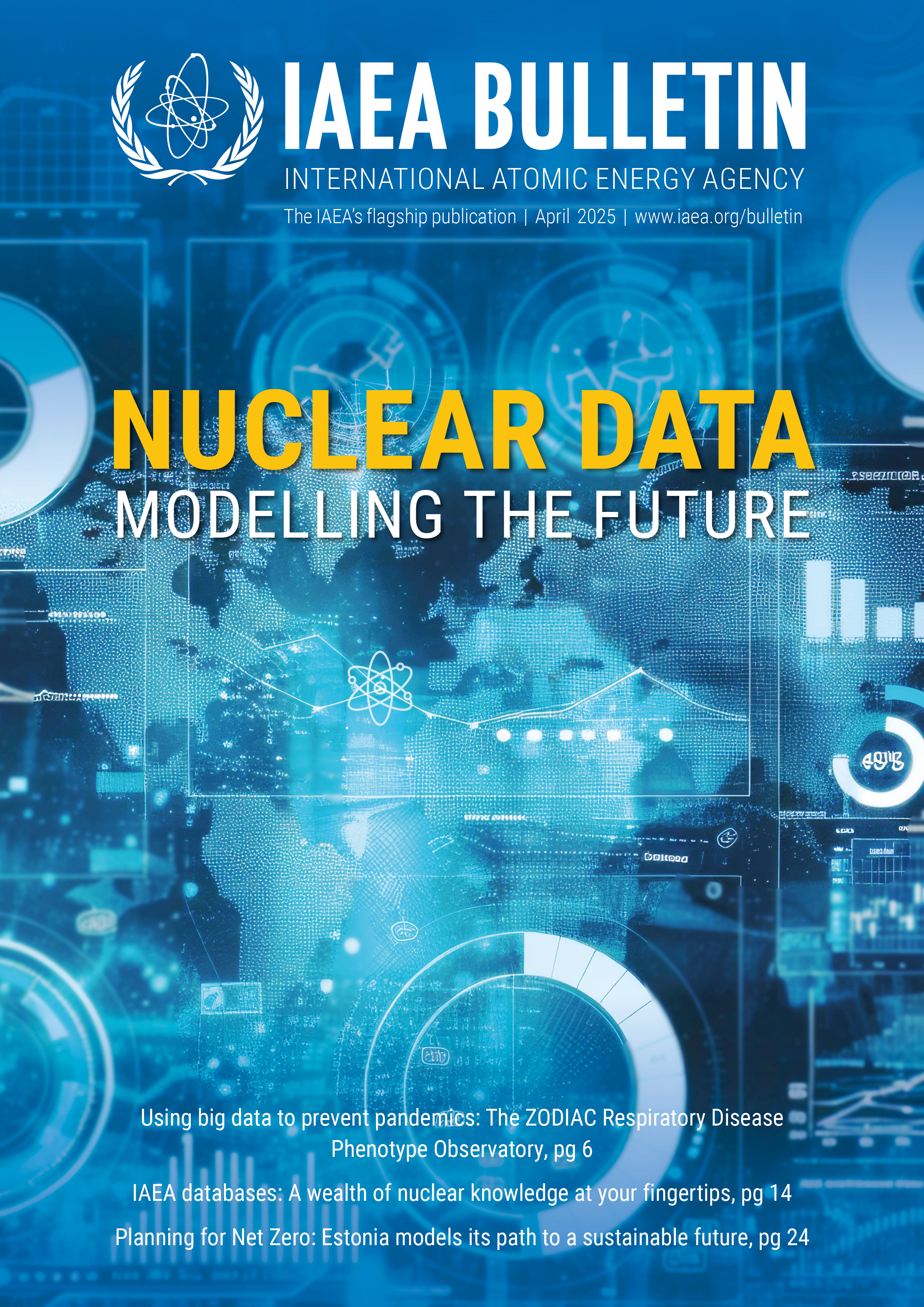(This article was originally published in the April 2025 IAEA Bulletin).
A day in the life of an IAEA nuclear trade analyst

IAEA nuclear trade analyst?Malin Ardhammar at work.?(Photos: A. Barber Huescar/IAEA)
Morning
Although no day looks the same, Malin Ardhammar, an IAEA Senior Safeguards Analyst specializing in nuclear trade, often starts the day with a fundamental question: has a country traded any goods that are relevant to safeguards? She settles down at her desk with a coffee and sets about answering this question, collecting information from various sources on the nuclear industry and nuclear-relevant trade. Sources include the information declared by a State — as required under its safeguards agreement and, if applicable, additional protocol — as well as information from IAEA technical cooperation activities, industry websites and trade databases.
“We analyse international trade to assess the consistency between State-declared nuclear activities and transfers of nuclear materials and relevant commodities against public trade records,” said Malin. “Our goal is to identify important outliers so that we can ask the necessary questions, clarify and support the drawing of sound safeguards conclusions.”
Trade records, such as those from a country’s statistics office or international trade databases such as the United Nations Comtrade database, can point to potential indicators of undeclared nuclear-related activities or transfers. Some nuclear-related items are subject to regular monitoring, such as various forms of uranium and nuclear reactor parts. Other items are investigated on a case-by-case basis, for example potentially safeguards relevant products such as mass spectrometers, lasers, pressure transducers and carbon fibre.
Once Malin has collected what she needs from each source, she can conduct a comparative analysis to check the consistency of all the available information.
Afternoon
After lunch, Malin evaluates all the available information to identify potential outliers that may require further investigation. She will typically check the following elements in declared and trade-related information for consistency:
- quantities and types of nuclear materials and equipment transferred;
- dates and locations of transactions;
- names and addresses of suppliers and recipients; and
- descriptions of nuclear activities and facilities.
“Nuclear trade analysts have a special role because we look at additional information sources on nuclear material and activities,” said Malin. “It’s our job to discover which trade transactions are worth investigating further.”
If any indicators of undeclared transfers are identified during the analysis, the IAEA follows up with the State concerned as appropriate. Within the scope of the safeguards agreement, this could mean submitting inquiries to the State or conducting in-field activities, such as an inspection or design information verification, aimed at resolving the issue.
“Even though nuclear trade analysts set out to prove a negative, success in this role strengthens safeguards conclusions,” Malin explained. “Through this work, I head home each day knowing that I’ve supported the IAEA in providing assurances to the international community that safeguarded nuclear material and technology remain in peaceful use.”
____________________________________________________________________________________________
Safeguards relevant information in nuclear trade
The IAEA has a mandate to verify the peaceful use of nuclear material and technology in the 191 States with which it has a safeguards agreement in force. To draw soundly based safeguards conclusions, the Agency employs a multifaceted approach to nuclear verification, combining in-field activities with the analysis of safeguards relevant information provided by countries and collected from other sources.
One of the ways in which the IAEA validates that State reports of nuclear material are correct and complete is through nuclear trade analysis. To perform this task, the IAEA relies on a team of safeguards analysts to evaluate the information it receives, generates and collects.
Nuclear trade analysts work in close collaboration with safeguards inspectors and other safeguards analysts. They also garner information from other IAEA departments, such as the Department of Technical Cooperation, about the Agency’s wider work with States.
